Generic Medicines
Taj Pharma is the largest generic pharmaceutical company in India. We hold top positions in different established markets worldwide generics markets..
Iran became a unique Islamic republic in 1979, when the monarchy was overthrown and religious clerics assumed political control under supreme leader Ayatollah Khomenei.
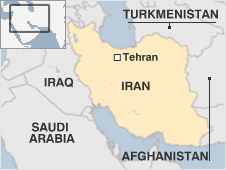 |
The Iranian revolution put an end to the rule of the Shah, who had alienated powerful religious and political forces with a program of modernization and Westernization.
Persia, as Iran was known before 1935, was one of the greatest empires of the ancient world, and the country has long maintained a distinct cultural identity within the Islamic world by retaining its own language and adhering to the Shia interpretation of Islam.
In 2002, US President George W Bush declared Iran as part of an "axis of evil". Washington accuses it of undermining its efforts in Iraq and of trying to develop nuclear weapons.
Iran, which is building its first atomic power station with Russian help, says its nuclear ambitions are peaceful.
AT-A-GLANCE
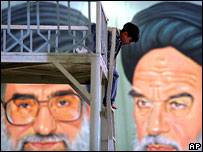 Politics: Conservatives have kept reformers at bay and retain power in the complex system of religious and democratic government
Economy: Iran holds 9% of world oil reserves; a critical shortfall in jobs has hit the young
International: Pressure continues to mount on Iran over its nuclear programme; even China and Russia supported a UN resolution condemning the programme in November 2009
|
In 2006 the government announced that it had succeeded in enriching uranium. President Ahmadinejad said Iran has an "inalienable right" to produce nuclear fuel.
The country has an abundance of energy resources - substantial oil reserves and natural gas reserves second only to those of Russia.
Iran has been led by a conservative elite since 1979, but appeared to be entering another era of political and social transformation with the victory of the liberals in parliamentary elections in 2000.
But the reformists, kept on the political defensive by powerful conservatives in the government and judiciary, failed to make good on their promises.
Former President Mohammad Khatami's support for greater social and political freedoms made him popular with the young - an important factor as around half of the population is under 25.
But his liberal ideas put him at odds with the supreme leader, Ayatollah Khamenei, and hardliners reluctant to lose sight of established Islamic traditions.
The elections of June 2005 dealt a blow to the reformists when Mahmoud Ahmadinejad, Tehran's ultra-conservative mayor, became president.
Mr Ahmadinejad's controversial re-election in June 2009 has further widened the rift between conservatives and reformists within Iran's political establishment.
Supreme leader: Ayatollah Ali Khamenei
The Supreme Leader - the highest power in the land - appoints the head of the judiciary, military leaders, the head of radio and TV and Friday prayer leaders. He also confirms the election of Iran's president.
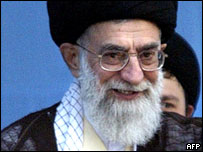 |
Moreover, the Supreme Leader selects six members of the 12-member Guardian Council, an influential body which has to pass all legislation and which can veto would-be election candidates.
The Leader is chosen by the clerics who make up the Assembly of Experts. Ayatollah Ali Khamenei was appointed for life in June 1989, succeeding Ayatollah Khomeini, the founder of the Islamic republic. He previously served two consecutive terms as president in the 1980s.
He has intervened on behalf of conservatives, coming into conflict with former president Mohammad Khatami and other reformists.
Ayatollah Khamenei endorsed the results of the disputed presidential election of June 2009, which gave a landslide victory and a second term to his ally, President Mahmoud Ahmadinejad.
However, the unprecedented defiance by opposition supporters to his call for an end to street protests against the result is thought to have undermined his authority.
Ayatollah Khamenei's subsequent statement that there was no proof that opposition leaders blamed for the post-election unrest had acted for foreign powers appeared to signal a more conciliatory stance towards the reformists.
President: Mahmoud Ahmadinejad
Mahmoud Ahmadinejad was re-elected as Iran's president in June 2009, amid a bitterly contested poll result which led to the most serious internal unrest seen in the country since the 1979 Islamic revolution.
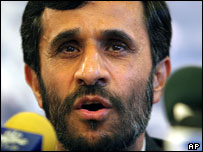
Fraud claims surrounding Mr Ahmadinejad's re-election sparked mass protests
|
Official results from the 12 June election said that Mr Ahmadinejad had won 62.6% of the vote, while his closest challenger, Mir Hossein Mousavi, received 33.8%.
Amid claims of fraud and vote-rigging, opposition supporters took to the streets. Around 20 people were killed and more than 1,000 arrested in the wave of protests that followed.
As tensions escalated, supreme leader Ayatollah Ali Khamenei threw his weight behind Mr Ahmadinejad, while the powerful Guardian Council confirmed the result and ruled out any annulment. He was sworn in for his second term in August 2009.
The Iranian authorities claimed foreign interference was stoking the unrest, and singled out Britain for criticism.
Outspoken style
The ultra-conservative Mr Ahmadinejad served as Tehran's mayor before winning a run-off vote in elections in June 2005, defeating his rival, the former president Akbar Hashemi Rafsanjani, to become Iran's first non-cleric president for 24 years.
Much of his support came from poorer and more religious sections of Iran's rapidly growing population, particularly outside Tehran.
Promising an administration of "peace and moderation", he said his government would press on with Iran's controversial nuclear programme.
His outspoken style and hard anti-Western line have often caused outrage abroad, most notably in 2005, when he made a controversial statement in which he envisaged the replacement of Israel with a Palestinian state, and described the Holocaust as a "myth". He denied implying a threat to Israel.
Local elections in December 2006 - his first major test at the polls since coming to power - saw his allies trailing moderate conservatives and reformists.
But parliamentary elections in March 2008 - in which many pro-reform candidates were disbarred from standing - saw a strong showing not only by the president's supporters but also by more pragmatic conservatives who oppose his confrontational style of dealing with western countries.
In 2008, he faced mounting criticism of his handling of the economy, with hardship on the rise as a result of falling oil prices and the UN sanctions imposed in response to Iran's nuclear programme.
Born near Tehran in 1956, Mahmoud Ahmadinejad is a former provincial governor and Revolutionary Guards officer. He was actively involved in the Islamic revolution and was a founding member of the student union that took over the US embassy in Tehran in 1979. But he denies being one of the hostage-takers.
The struggle for influence and power in Iran is played out in the media.
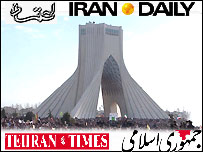 |
The relatively free press, a tangible achievement of former President Khatami's government, has been targeted by conservatives. Many pro-reform publications have been closed and reformist writers and editors jailed. The conservative judiciary has also campaigned against the liberal media.
There are some 20 major national dailies, but few Iranians buy a newspaper every day. Sports titles are the biggest sellers.
Broadcasters are more restricted than the press. Despite a ban on owning dishes, foreign satellite TV channels are widely watched; this is largely tolerated by the authorities. Stations operated by exiles in the US were said to have played a role in student protests in 2003.
State-run Islamic Republic of Iran Broadcasting - IRIB - operates national and provincial networks. Its Jaam-e Jam international TV channels are available worldwide via satellite. IRIB targets Arabic speakers in Iraq and the Middle East via the Al-Alam and Al-Kawthar TV networks.
It launched an English-language satellite station, Press TV, in 2007. President Ahmadinejad said its mission would be "to stand by the oppressed of the world".
Television is very popular, with more than 80% of Iranians being regular viewers. The most-watched network is the third state channel, the youth channel.
IRIB's radio channels include a parliamentary network and Radio Koran. The Voice of the Islamic Republic of Iran, an external radio service, broadcasts via shortwave and the internet.
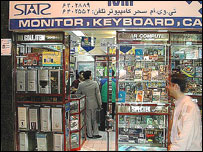 Iran online: Internet use has mushroomed
|
By early 2008 there were around 23 million internet users (InternetWorldStats). The web is the main forum for dissident voices. Access is easy to arrange and affordable for middle-class households.
However, service providers are prevented from allowing access to sites deemed to be pornographic or anti-Islamic.
News sites are becoming increasingly important in providing information and insight. They often have strong political leanings. There are tens of thousands of weblogs, with bloggers active both in Iran and among the diaspora. Officials, including President Ahmadinezhad, have launched blogs.
Foreign broadcasters target Iranian audiences. They include BBC Persian TV, whose satellite broadcasts suffered from deliberate interference from within Iran following disputed elections in June 2009.
The press
Television
Radio
News agencies
Mehr News Agency - affiliated to Islamic Propagation Organisation, English-language pages
AFRICA | ASIA-PACIFIC | AMERICAS | EUROPE | MIDDLEEAST | SOUTHASIA
![]()
![]()
![]()
Mauritania Mauritius Morocco Mozambique Namibia Niger Nigeria Republic-of-congo Rwanda Sao-tome-and-principe Senegal Seychelles Sierra-leone Somalia South-africa Sudan Swaziland Tanzania The-gambia Togo Tunisia Uganda Australia Brunei Burma Cambodia China East-timor Fiji Indonesia Japan Kazakhstan Kiribati Kyrgyzstan Laos Malaysia Marshall-islands Micronesia Mongolia Nauru New-zealand North-korea Palau Papua-new-guinea Samoa Singapore Solomon-islands South-korea Taiwan Tajikistan Thailand The-philippines Tonga Turkmenistan Tuvalu Uzbekistan Vanuatu Vietnam Antigua-and-barbuda Belize Bolivia Brazil Canada Chile Colombia Costa-rica Cuba Dominica Dominican-republic Ecuador El-salvador Grenada Guatemala Guyana Haiti Honduras Jamaica Mexico Nicaragua St-kitts-and-nevis St-lucia Suriname Trinidad-and-tobago Uruguay Venezuela Albania Andorra Armenia Austria Azerbaijan Belarus Belgium Bosnia-hercegovina Bulgaria Croatia Cyprus Czech-republic Denmark Estonia Finland France Georgia Germany Greece Hungary Iceland Ireland Italy Latvia Liechtenstein Lithuania Luxembourg Macedonia Malta Moldova Monaco Montenegro Norway Poland Portugal Russia San-marino Serbia Slovakia Slovenia Spain Sweden Algeria Egypt Iran Iraq Israel-and-palestinian-territories Jordan Kuwait Lebanon Libya Mauritania Oman Saudi-arabia Sudan Syria Tunisia United-arab-emirates Yemen Afghanistan Bangladesh Bhutan India Nepal Pakistan Sri-Lanka The-Maldive